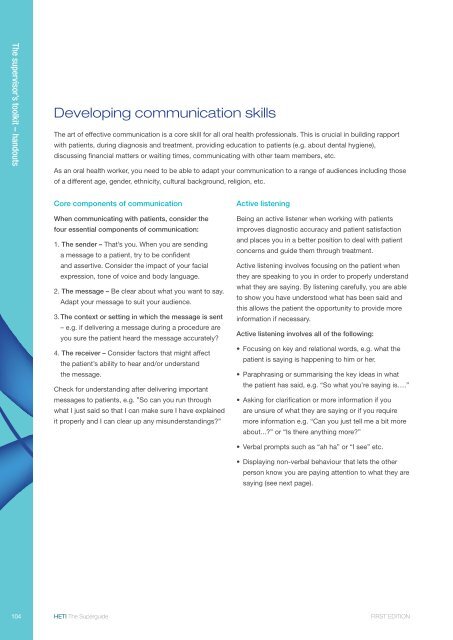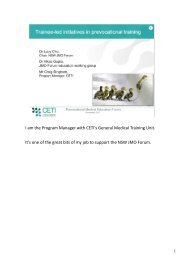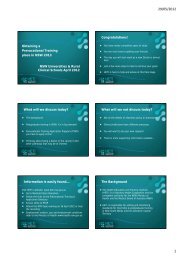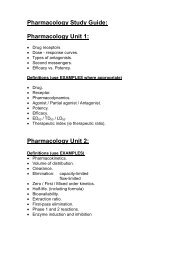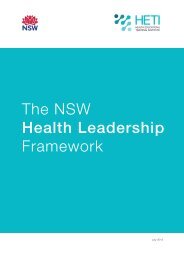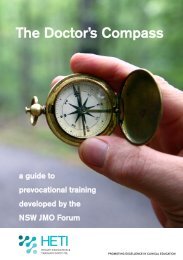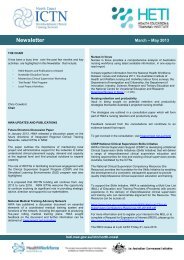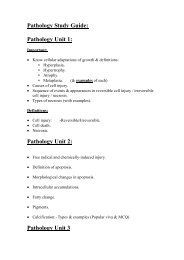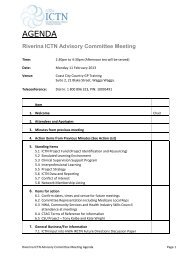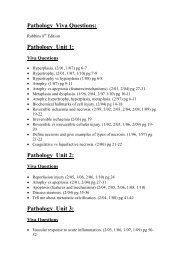Open - HETI - NSW Government
Open - HETI - NSW Government
Open - HETI - NSW Government
- No tags were found...
You also want an ePaper? Increase the reach of your titles
YUMPU automatically turns print PDFs into web optimized ePapers that Google loves.
The supervisor’s toolkit – handoutsDeveloping communication skillsThe art of effective communication is a core skill for all oral health professionals. This is crucial in building rapportwith patients, during diagnosis and treatment, providing education to patients (e.g. about dental hygiene),discussing financial matters or waiting times, communicating with other team members, etc.As an oral health worker, you need to be able to adapt your communication to a range of audiences including thoseof a different age, gender, ethnicity, cultural background, religion, etc.Core components of communicationWhen communicating with patients, consider thefour essential components of communication:1. The sender – That’s you. When you are sendinga message to a patient, try to be confidentand assertive. Consider the impact of your facialexpression, tone of voice and body language.2. The message – Be clear about what you want to say.Adapt your message to suit your audience.3. The context or setting in which the message is sent– e.g. if delivering a message during a procedure areyou sure the patient heard the message accurately?4. The receiver – Consider factors that might affectthe patient’s ability to hear and/or understandthe message.Check for understanding after delivering importantmessages to patients, e.g. ”So can you run throughwhat I just said so that I can make sure I have explainedit properly and I can clear up any misunderstandings?”Active listeningBeing an active listener when working with patientsimproves diagnostic accuracy and patient satisfactionand places you in a better position to deal with patientconcerns and guide them through treatment.Active listening involves focusing on the patient whenthey are speaking to you in order to properly understandwhat they are saying. By listening carefully, you are ableto show you have understood what has been said andthis allows the patient the opportunity to provide moreinformation if necessary.Active listening involves all of the following:• Focusing on key and relational words, e.g. what thepatient is saying is happening to him or her.• Paraphrasing or summarising the key ideas in whatthe patient has said, e.g. “So what you’re saying is….”• Asking for clarification or more information if youare unsure of what they are saying or if you requiremore information e.g. “Can you just tell me a bit moreabout...?” or “Is there anything more?”• Verbal prompts such as “ah ha” or “I see” etc.• Displaying non-verbal behaviour that lets the otherperson know you are paying attention to what they aresaying (see next page).104 <strong>HETI</strong> The Superguide FIRST EDITION


